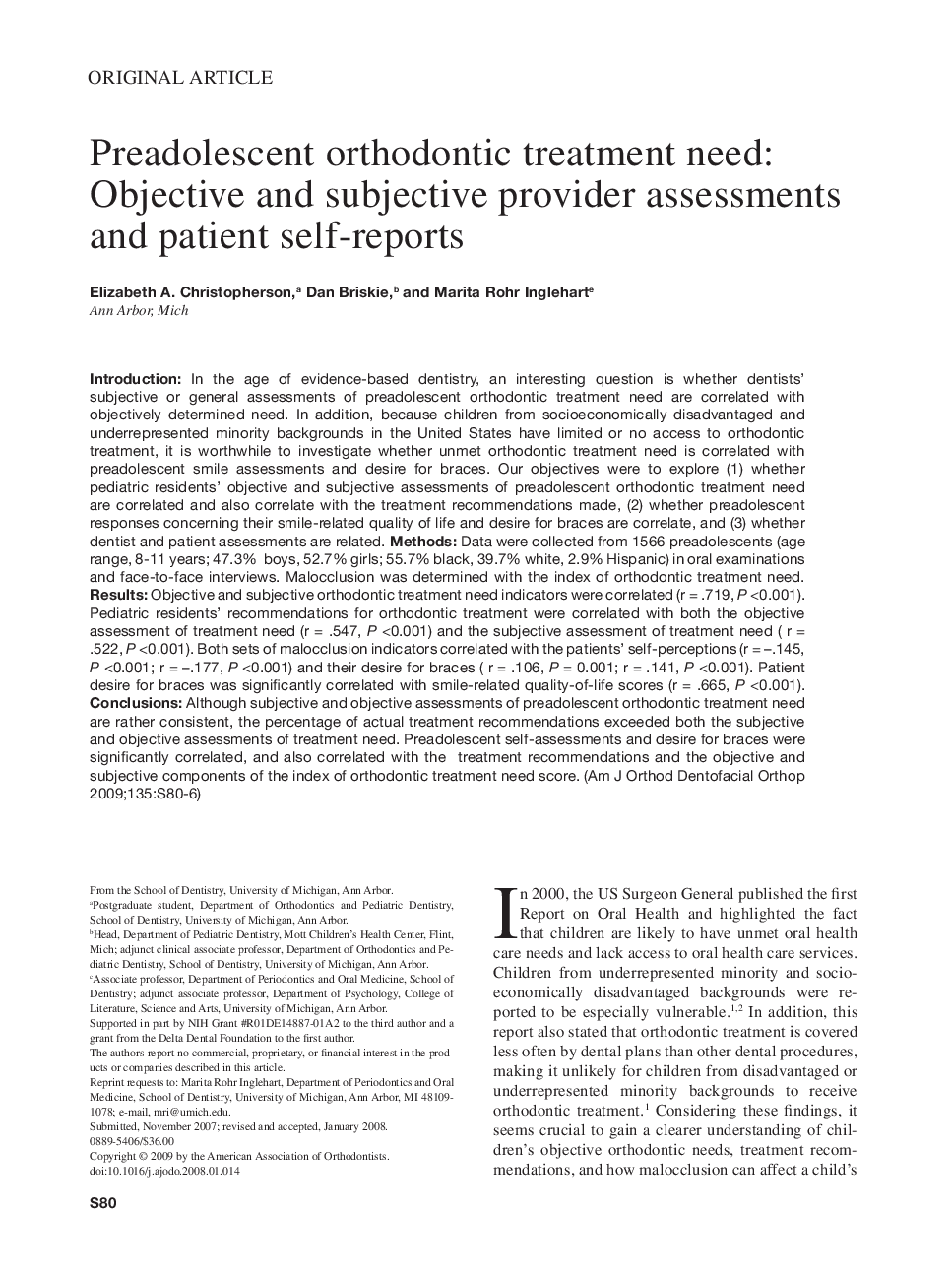| Article ID | Journal | Published Year | Pages | File Type |
|---|---|---|---|---|
| 3120034 | American Journal of Orthodontics and Dentofacial Orthopedics | 2009 | 7 Pages |
IntroductionIn the age of evidence-based dentistry, an interesting question is whether dentists' subjective or general assessments of preadolescent orthodontic treatment need are correlated with objectively determined need. In addition, because children from socioeconomically disadvantaged and underrepresented minority backgrounds in the United States have limited or no access to orthodontic treatment, it is worthwhile to investigate whether unmet orthodontic treatment need is correlated with preadolescent smile assessments and desire for braces. Our objectives were to explore (1) whether pediatric residents' objective and subjective assessments of preadolescent orthodontic treatment need are correlated and also correlate with the treatment recommendations made, (2) whether preadolescent responses concerning their smile-related quality of life and desire for braces are correlate, and (3) whether dentist and patient assessments are related.MethodsData were collected from 1566 preadolescents (age range, 8–11 years; 47.3% boys, 52.7% girls; 55.7% black, 39.7% white, 2.9% Hispanic) in oral examinations and face-to-face interviews. Malocclusion was determined with the index of orthodontic treatment need.ResultsObjective and subjective orthodontic treatment need indicators were correlated (r = .719, P <0.001). Pediatric residents' recommendations for orthodontic treatment were correlated with both the objective assessment of treatment need (r = .547, P <0.001) and the subjective assessment of treatment need (r = .522, P <0.001). Both sets of malocclusion indicators correlated with the patients' self-perceptions (r = −.145, P <0.001; r = −.177, P <0.001) and their desire for braces (r = .106, P = 0.001; r = .141, P <0.001). Patient desire for braces was significantly correlated with smile-related quality-of-life scores (r = .665, P <0.001).ConclusionsAlthough subjective and objective assessments of preadolescent orthodontic treatment need are rather consistent, the percentage of actual treatment recommendations exceeded both the subjective and objective assessments of treatment need. Preadolescent self-assessments and desire for braces were significantly correlated, and also correlated with the treatment recommendations and the objective and subjective components of the index of orthodontic treatment need score.
